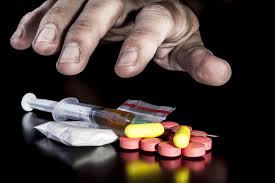Majority of the drug abusers experience relapse. They come in and out many times in the drug rehabilitation. This leads us to question why they keep falling in the same hole. Is it because they don’t have a strong willpower to overcome the addiction?
The more I learned and knew about addiction related to drug abuse, the more I understood the relapse behavior and felt sympathy and sad for the addicted individuals.

Addiction is formed:
- By activating reward circuits in the brain via D1-R receptors (direct pathway) and inhibiting the punishment via D2-R (indirect pathway). D1-R and D2-R are receptors of dopamine (DA) neurons, located in the ventral tegmental area (VTA).
- By the increasing of released DA, result in the sharper and stronger craving of the drug as well as the sustaining motivation. This may explain why drugs are more likely to result in compulsive patterns of admiration than natural reinforcers, like food and sex.
- By changing in dorsal striatum that is associated with habit formation. The drug abusers start to form the habit of taking drug from controlled to compulsive behaviors.
- By changing neuroplasticity – impacting the long-term potentiation (LTP) and long-term depression (LTD). Both LTP and LTD play an important role in learning and memory. The changes in synaptic strength in LTP are associated with larger synapses and dendric spines; whereas changes in LTD involves smaller synapses and dendritic spines. Therefore, the drug involves in the long-lasting molecular memory (LTP and LTD), leading to modify subsequent behaviors.

Figure 1: The new synapses are formed in the dendrite fter 2-4wk wd of chronic cocaine, comparing to the control
5. By reducing D2R availability in ventral and dorsal striatum for most of the drugs, except for marijuana. This reduces the activity in pre-frontal cortex (PFC) brain regions: anterior cingulate (ACC) and orbitofrontal (OFC) cortical regions. The ACC ad OFC are associated with self-control and salience attribution; therefore, their disruption impacts the increasing of the impulsive and compulsive behaviors.
Overall, the drug of abuse changes the pattern and the intensity of DA firing. During the drug consumption, the drug users generally receive the quick and strong rewarding responses, but in the molecular pathway, their synaptic plasticity is dramatically changed: their habit, memory and motivation for taking the drug are strengthen by forming new synapses that are associated with the drug use; whereas their self-control ability and salience attribution are weakened.
Because their long-termed memory is so strong with the drug cues, drug abusers tend to relapse, especially when they come back to the same environment. Their brains know exactly what to do to get the drug.
Because of the huge impact of neuroplasticity in drug abuse, these new synapses – associated with the “craving” response – definitely take a long time to weaken. Thus, the drug rehabilitation need to change their treatments. Instead of taking all the drug abusers and helping them in a short period of time, the program need to selectively choose the in-taken abusers and help them to recover from addiction in a longer period of time.
This approach may significantly reduce the relapse behaviors in drug abusers and improve their recovering from drug addiction as well as improving in financial budget for the rehabilitation programs. It is essential to understand that addiction can’t be treated by the quick fix, like putting the bandage on the drug abusers.
